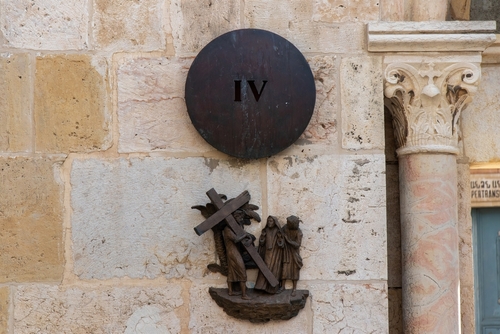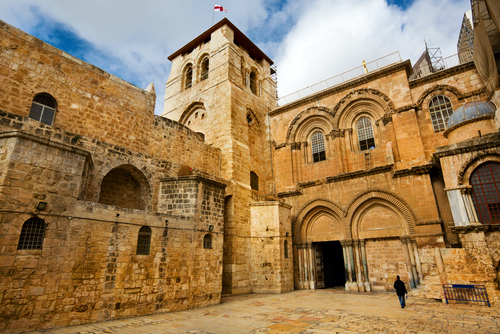Good Friday & It’s History

One of my more interesting trips was to Jerusalem for Easter one year. You walk the streets of this ancient city, and they have marked the Stations of the Cross for those who want to follow the path. That was very interesting. You follow the procession and then end up at the Church of the Holy Sepulchre that covers Calvary, which is completely enclosed along with Christ’s Tomb in a Church originally constructed by Constantine the Great’s Mother, Saint Helena.
The Church of the Holy Sepulchre lies in the Old City of Jerusalem. Helena first built a church on the site and dedicated it about 336 AD. The Persians burned it in 614AD, and it was then restored by an abbot of the monastery during the Byzantine reign of Theodosius (616–626AD). It was then destroyed again by the caliph al-Ḥākim bi-Amr Allāh around 1009AD. It was again restored by the Byzantine emperor Constantine IX Monomachus. Finally, the Crusaders carried out a general rebuilding of the church during the 12th century. Since all the various Christian sects are present, the Church remains unfinished since they still cannot reach an agreement.
Naturally, being a lover of history, I have always traveled around to experience what these places are. I roamed around Israel, visited all the famous places, and even climbed Masada rather than taking the tram. Some have asked me when Good Friday was first celebrated – (called Great and Holy Friday in the Orthodox Church).
From what I would say, the earliest record is found in the Didascalia Apostolorum, which appears to date back to 230 AD, probably during the reign of Severus Alexander – 222-235AD. This prescribes activities during Holy Week, including a fast on Friday. The Twelve Apostles reportedly wrote it at the time of the Council of Jerusalem, described in chapter 15 of the Acts of the Apostles. This event has been attributed to be held in Jerusalem around c. 48–50 AD. However, many have proposed that this copy was a later composition during the 3rd century AD.
Something similar is recorded in the Apostolic Constitutions, which are dated to 375–380AD. A Spanish nun named Egeria wrote a diary sometime between 381 and 385AD, in which she, too, records the event and celebration.
Constitutions of the Holy Apostles (Constitutiones Apostolorum) is a Christian collection divided into eight books. This is classified among the Church Orders, a genre of early Christian literature. This was the prescriptions regarding moral conduct, liturgy, and Church organization – the origin of Canon Law.

